Coumaphos
- CAS NO.:56-72-4
- Empirical Formula: C14H16ClO5PS
- Molecular Weight: 362.77
- MDL number: MFCD00041820
- EINECS: 200-285-3
- SAFETY DATA SHEET (SDS)
- Update Date: 2025-06-13 14:48:16
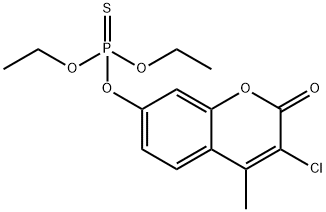
What is Coumaphos?
Description
Technical coumaphos is a tan crystalline solid with a slight sulphur odour. It is insoluble in water; slightly soluble in acetone, chloroform, and ethanol; and soluble in organic solvents. Coumaphos when heated undergoes decomposition and releases very toxic fumes of sulphur oxides, phosphorous oxides, and chlorides. It is used for the control of a wide variety of livestock insects, including cattle grubs, screwworms, lice, scabies, flies, and ticks. It is used against ectoparasites, which are insects that live on the outside of host animals such as sheep, goats, horses, pigs, and poultry. Coumaphos is incompatible with alkalis, strong oxidising agents, pyrethroids, and piperonyl butoxide. The U.S. EPA has grouped coumaphos as RUP.
Chemical properties
tan or beige solid
Chemical properties
coumaphos is a tan crystalline solid with a slight sulfur odor. It is insoluble in water, slightly soluble in acetone, chloroform, and ethanol, and soluble in organic solvents. It is used for the control of a wide variety of livestock insects, including cattle grubs, screwworms, lice, scabies, fl ies, and ticks. It is used against ectoparasites, which are insects that live outside the host animals, such as sheep, goats, horses, pigs, and poultry. Coumaphos is incompatible with pyrethroids and piperonyl butoxide. The US EPA has grouped coumaphos as an RUP. Acute dermal exposures to occupational workers occur during mixing, loading, and application of coumaphos, especially in the livestock dip-vat and hand-held sprayer uses
Chemical properties
Coumaphos is a white to brownish crystalline solid with a slight sulfurous odor
The Uses of Coumaphos
Coumaphos is used to control larvae of Diptera and ticks on cattle. It has also recently been used to control Varroa mite in honeybees.
The Uses of Coumaphos
Insecticide, nematocide.
The Uses of Coumaphos
insecticide, cholinesterase inhibitor
Definition
ChEBI: Coumaphos is an organothiophosphate insecticide, an organic thiophosphate and an organochlorine compound. It has a role as an agrochemical, an acaricide, an antinematodal drug, an avicide and an EC 3.1.1.8 (cholinesterase) inhibitor. It is functionally related to a chlorferron.
brand name
Baymix (Bayer AnimalHealth); Meldane (Bayer Animal Health).
General Description
Slightly brownish crystals with a slight sulfurous odor. Used for the control of a wide variety of livestock insects including cattle grubs, lice, scabies, flies, and ticks; the common ectoparasites of sheep, goats, horse, swine, and poultry as well as for screwworms in all these animals.
Air & Water Reactions
Insoluble in water. Coumaphos hydrolyzes slowly under alkaline conditions.
Reactivity Profile
Organothiophosphates, such as Coumaphos, are susceptible to formation of highly toxic and flammable phosphine gas in the presence of strong reducing agents such as hydrides. Partial oxidation by oxidizing agents may result in the release of toxic phosphorus oxides. Coumaphos reacts with strong oxidizing agents and alkaline materials.
Hazard
Use may be restricted; cholinesterase inhibitor. Questionable carcinogen.
Health Hazard
Very toxic, probable oral lethal dose is 50-500 mg/kg, or between 1 teaspoonful and 1 oz. for a 70 kg (150 lb.) person. May be fatal if inhaled, swallowed, or absorbed through skin. Contact may cause burns to skin and eyes.
Health Hazard
Exposures to coumaphos cause signs of poisoning such as diarrhea, drooling, diffi culty in breathing, leg and neck stiffness among occupational workers. Acute inhalation of coumaphos causes headaches, dizziness, and incoordination. Moderate poisoning causes muscle twitching and vomiting while severe poisoning leads to fever, toxic psychosis, lung edema, and high blood pressure. Repeated exposures cause irritability, confusion, headache, speech diffi culties, effects on memory concentration, disorientation, severe depressions, sleepwalking, and drowsiness or insomnia among occupational workers. Coumaphos has been classifi ed as non-carcinogenic to humans
Health Hazard
Highly toxic compound; choline stearaseinhibitor; toxic symptoms include headache,dizziness, blurred vision, muscle spasm,vomiting, abdominal pain, diarrhea, chestpain, and shortness of breath; high dose maycause seizure, respiratory paralysis, comaand death; ingestion of 15–20 g can be fatalto adult humans.
LD50 oral (rat): 13 mg/kg
LD50 skin (rat): 860 mg/kg
LC50 inhalation (rat): ~300 mg/m3.
Fire Hazard
When heated to decomposition, Coumaphos emits very toxic fumes of sulfur oxides, phosphorus oxides, and chlorides. Incompatible with piperonyl butoxide. Stable in water.
Agricultural Uses
Insecticide, Nematocide; Veterinary medication: The U.S. EPA classifies the formulations 11.6% EC and 42% flowable concentrate end-use products as Restricted Use Pesticides (RUPs) because they pose a hazard of acute poisoning from ingestion. Coumaphos is an insecticide/acaricide used to control a wide variety of liver stock insects including cattle grubs, fleeceworms, lice scabies, flies, and ticks; the common ectoparasites of beef cattle, dairy cows, sheep, goats, horse, swine, and poultry as well as for screw worms in all these animals. The USDA uses coumaphos in dip vats along the U.S.-Texas border to control ticks that carry Texas Cattle Fever. It is added to cattle and poultry feed to control the development of fly larvae that breed in manure. It has applications in beekeeping.
Trade name
AGRIDIP®; ASUNTOL®; AZUNTHOL®; BAY® 21/199; BAYER® 21/199; BAYMIX®; BAYMIX® 50; CHECKMITE®; CO-RAL®[C]; DELICE®; MELDANE®; MELDONE®; MUSCATOX®; NEGASHUNT®; DIOLICE®; RESITOX®; SUNTOL®; UMBETHION®
Safety Profile
Poison by ingestion, sktn contact, inhalation, and intraperitoneal routes. Mutation data reported. When heated to decomposition, it emits very toxic fumes of SOx, PO,, and Cl-. See also COUMARIN.
Potential Exposure
A potential danger to those involved in the manufacture, formulation, and application of this material which is used for control of a wide variety of livestock insects including cattle grubs, lice scabies, flies, and ticks; the common ectoparasites of sheep, goats, horse, swine, and poultry; as well as for screw worms in all these animals.
First aid
If this chemical gets into the eyes, remove anycontact lenses at once and irrigate immediately for at least15 min, occasionally lifting upper and lower lids. Seek medical attention immediately. If this chemical contacts theskin, remove contaminated clothing and wash immediatelywith soap and water, followed by alcohol. Speed in removing material from skin is of extreme importance. Shampoohair promptly if contaminated. Seek medical attentionimmediately. If this chemical has been inhaled, removefrom exposure, begin rescue breathing (using universal precautions, including resuscitation mask) if breathing hasstopped and CPR if heart action has stopped. Transferpromptly to a medical facility. When this chemical hasbeen swallowed, get medical attention. Give large quantitiesof water and induce vomiting. Do not make an unconsciousperson vomit. Effects may be delayed. Keep victim underobservation
Carcinogenicity
There was no evidence of carcinogenicity at any dose in rats fed diets that contained 1, 5, or 25 ppm coumaphos (0.05, 0.25, or 1.22 mg/kg/day (males); 0.07, 0.36, or 1.70 mg/kg/day (females)) for 2 years . There was no evidence of carcinogenicity in another study when rats were given diets that contained 10 or 20 ppm coumaphos for 103 weeks .
Metabolic pathway
By UV irradiation of coumaphos in solutions, three dimeric products are isolated and identified as the head-to-tail anti-dimer, its oxidation product, and the head-to-tail syn-dimer.
Metabolism
Degradation occurs rapidly in the liver of the cow and rat. The principal metabolite excreted in urine is diethyl hydrogen phosphorothioate. Deethylation products are also found in lesser amounts. Photolytic DT50 on soil surface is 23.8 d.
Storage
Color Code—Blue: Health Hazard/Poison: Storein a secure poison location. Store in tightly closed containers in a cool, well-ventilated area
Shipping
UN2783 Organo phosphorus pesticides, solid, toxic, Hazard Class: 6.1; Labels: 6.1-Poisonous material. UN3018 Organophosphorus pesticides, liquid, toxic, Hazard Class: 6.1; Labels: 6.1-Poisonous materials.
Degradation
Note that technical coumaphos may contain the dechlorinated analogue
'Potasan' (O-4-methyl-2-oxo-2H-chromen-7-yl O,O-diethyl phosphorothioate)
(2) as an impurity (Waleski, 1966; Volpk and Mallet, 1976).
Coumaphos is stable to hydrolysis in aqueous media although the
pyrone ring opens in dilute alkali and re-closes on acidification (PM).
In water at pH 4.0, 5.5, 6.3, 7.0 and 8.5, the DT50 values were 33, 67, 124,
347 and 29 days, respectively. Coumaphos degraded first to coroxon
(coumaphos oxon) (3), presumably by an oxidative mechanism and this
was hydrolysed to chlorferon (3-chloro-4-methyl-7-hydroxycoumarin)(4). The analysis was by TLC (Mallet and Volpe,1978).
Toxicity evaluation
The acute oral LD50 values for male and female rats are 41 and 16 mg/kg, respectively. Inhalation LC50 values (1 h) for male and female rats are >1081 and 341 mg/m3 air. In 2-yr trials, rats tolerated 100 mg/kg diet.
Incompatibilities
Organophosphates are susceptible to formation of highly toxic and flammable phosphine gas in the presence of strong reducing agents such as hydrideds and active metals. Partial oxidation by oxidizing agents may result in the release of toxic phosphorus oxides. Keep away from piperonyl butoxide, oxidizers, strong bases, water, and heat
Waste Disposal
Coumaphos can be decomposed by heating with concentrated alkali. Large amounts should be incinerated in a unit equipped with effluent gas scrubbing. Do not discharge into drains or sewers. Dispose of waste material as hazardous waste using a licensed disposal contractor to an approved landfill. Consult with environmental regulatory agencies for guidance on acceptable disposal practices. Generators of waste containing this contaminant (>=100 kg/mo) must conform to EPA regulations governing storage, transportation, treatment, and waste disposal. Incineration with effluent gas scrubbing is recommended. In accordance with 40CFR165, follow recommendations for the disposal of pesticides and pesticide containers. Must be disposed properly by following package label directions or by contacting your local or federal environmental control agency, or by contacting your regional EPA office
Properties of Coumaphos
| Melting point: | 95-97oC |
| Boiling point: | 449.9±55.0 °C(Predicted) |
| Density | 1.4740 |
| vapor pressure | 1.3 x 10-5 Pa (20 °C) |
| Flash point: | 100 °C |
| storage temp. | APPROX 4°C
|
| solubility | DMSO: Slightly Soluble,Methanol: Slightly Soluble |
| form | solid |
| Water Solubility | 1.5 mg l-1 (20 °C) |
| Merck | 13,2584 |
| BRN | 327083 |
| Stability: | Stable. Combustible. Incompatible with alkalies, strong oxidising agents. |
| CAS DataBase Reference | 56-72-4(CAS DataBase Reference) |
| NIST Chemistry Reference | Coumaphos(56-72-4) |
| EPA Substance Registry System | Coumaphos (56-72-4) |
Safety information for Coumaphos
| Signal word | Danger |
| Pictogram(s) |
 Skull and Crossbones Acute Toxicity GHS06  Environment GHS09 |
| GHS Hazard Statements |
H300:Acute toxicity,oral H311:Acute toxicity,dermal H410:Hazardous to the aquatic environment, long-term hazard |
| Precautionary Statement Codes |
P264:Wash hands thoroughly after handling. P264:Wash skin thouroughly after handling. P270:Do not eat, drink or smoke when using this product. P273:Avoid release to the environment. P280:Wear protective gloves/protective clothing/eye protection/face protection. P301+P310:IF SWALLOWED: Immediately call a POISON CENTER or doctor/physician. |
Computed Descriptors for Coumaphos
New Products
4,4-Difluoropiperidine hydrochloride tert-butyl 9-methoxy-3-azaspiro[5.5]undecane-3-carboxylate Indole Methyl Resin N-Isopropylurea N,N-Dicyclohexylcarbodiimide(DCC) MELDRUMS ACID 5-METHYLISOXAZOLE-4-CARBOXYLIC ACID Magnessium Bis glycinate Zinc ascorbate 1-bromo-2-butyne 2-acetamidophenol 9(10H)-anthracenone Erythrosin B, 4-Piperidinopiperidine 2-((4-morpholinophenylamino) (methylthio) methylene) malononitrile 2,4-dihydroxybenzaldehyde 3-(4-morpholinophenylamino)-5-amino-1H-pyrazole-4-carbonitrile Methyl 2-methylquinoline-6-carboxylate 2,6-dichloro-4-nitropyridine 4-Bromo-2-chlorobenzonitrile 2-(benzylamino)acetic acid hydrochloride 4-(tert-Butoxycarbonylamino)but- 2-ynoic acid 3,4-dihydro-2H-benzo[b][1,4]dioxepine 1-Phenyl-1-cycloprppanecarboxylicacidRelated products of tetrahydrofuran


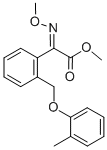
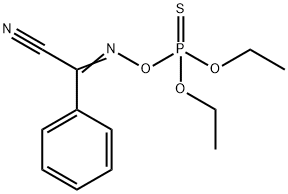

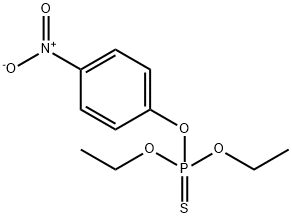
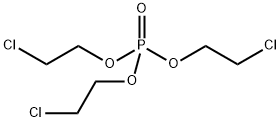
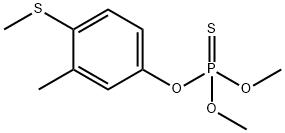
You may like
-
 Coumaphos 98% (GC) CAS 56-72-4View Details
Coumaphos 98% (GC) CAS 56-72-4View Details
56-72-4 -
 Coumaphos CAS 56-72-4View Details
Coumaphos CAS 56-72-4View Details
56-72-4 -
 3-(4-amino-1-oxoisoindolin-2-yl)-1-methylpiperidine-2,6-dione 98%View Details
3-(4-amino-1-oxoisoindolin-2-yl)-1-methylpiperidine-2,6-dione 98%View Details -
 614-19-7 98%View Details
614-19-7 98%View Details
614-19-7 -
 20677-73-0 (2,2-diethoxyethyl)methylamine 98%View Details
20677-73-0 (2,2-diethoxyethyl)methylamine 98%View Details
20677-73-0 -
 3-(4-(hydroxyamino)-1-oxoisoindolin-2-yl)piperidine-2,6-dione 98%View Details
3-(4-(hydroxyamino)-1-oxoisoindolin-2-yl)piperidine-2,6-dione 98%View Details -
 57381-49-4 2-bromo-4-chlorobenzonitrile 98%View Details
57381-49-4 2-bromo-4-chlorobenzonitrile 98%View Details
57381-49-4 -
 4,6-dichloropyrimidine-5-carbaldehyde 98%View Details
4,6-dichloropyrimidine-5-carbaldehyde 98%View Details
5305-40-8
